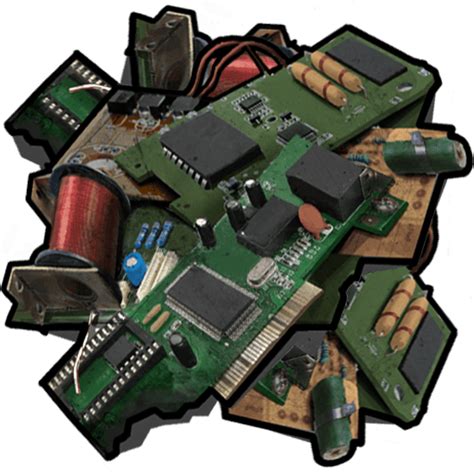How to Clean and Maintain Rusted Tech Trash: A Guide to Salvaging Your Old Gadgets
Old electronics, left neglected in garages, attics, or even forgotten drawers, often succumb to the ravages of rust. This isn't just an aesthetic issue; rust can compromise the functionality of your devices and, in some cases, pose safety hazards. This comprehensive guide will walk you through the process of safely cleaning and maintaining rusted tech trash, helping you salvage usable parts or responsibly dispose of what remains.
Why is My Tech Rusty?
Before tackling the cleaning process, understanding the cause of the rust is crucial. Rust, or iron oxide, forms when iron (a common component in many electronics) reacts with oxygen and water. This means that exposure to moisture, whether from humidity, spills, or leaks, is the primary culprit. Prolonged exposure to salty air can also accelerate the rusting process.
Assessing the Damage: What Can Be Saved?
Not all rusted tech is beyond repair. The severity of the rust determines the viability of restoration. A surface layer of rust on a metal casing might be manageable, whereas significant rust penetration into internal components likely means the device is unrecoverable.
Here's a simple assessment:
- Light Surface Rust: This is often manageable and can be cleaned.
- Moderate Rust: May require more intensive cleaning; internal components may be affected.
- Severe Rust: Likely beyond repair; focus on safe disposal.
How to Clean Rusted Tech Safely
Safety is paramount when handling rusted electronics. Always wear appropriate protective gear, including gloves and eye protection. Never attempt to repair or clean electronics while plugged in.
Tools You'll Need:
- Gloves: Protect your hands from rust and potentially harmful chemicals.
- Eye protection: Safety glasses are essential to prevent eye injury.
- Soft-bristled brush: For gently removing loose rust.
- Steel wool (fine grade): For more stubborn rust.
- WD-40 or similar rust penetrant: To loosen rust and prevent further corrosion.
- White vinegar: A natural rust remover (use cautiously).
- Baking soda: Can neutralize acids and help clean surfaces.
- Clean cloths or rags: For wiping surfaces.
- Isopropyl alcohol (optional): To clean circuit boards (use sparingly).
Cleaning Process:
- Preparation: Disconnect all power sources and remove batteries. Photograph the device before you start cleaning to help with reassembly.
- Loose Rust Removal: Use a soft-bristled brush to gently remove loose rust particles. Avoid scratching the surface.
- Rust Penetrant Application: Apply WD-40 or a similar rust penetrant to the affected areas. Allow it to sit for several minutes to penetrate the rust.
- Scrubbing: Use fine steel wool to gently scrub the rusted areas. Work carefully to avoid damaging the underlying metal.
- Cleaning: Wipe the area with a clean cloth to remove loosened rust and any remaining cleaning solution.
- Vinegar and Baking Soda (Optional): For more stubborn rust, create a paste of baking soda and vinegar. Apply it to the rust, let it sit for a few minutes, and then scrub gently. Rinse thoroughly with water.
- Drying: Allow the device to dry completely before attempting to reassemble it.
Internal Cleaning and Component Assessment
If the rust is limited to the exterior, cleaning the outside might be sufficient. However, if rust is suspected internally, proceed with caution.
Caution: Opening electronics can void warranties and potentially damage sensitive components. Proceed only if you are comfortable with electronics repair.
- Visual Inspection: Carefully examine internal components for rust or corrosion. If significant rust is present, the device may be unrecoverable.
- Contact Cleaning (If Applicable): Use isopropyl alcohol sparingly on circuit boards to remove corrosion. Apply with a cotton swab, and allow it to dry completely before reassembling.
What if I Can't Save It? Responsible Disposal
If your attempts to clean and restore the device are unsuccessful, responsible disposal is crucial. Do not simply throw rusted electronics in the trash. Many components contain hazardous materials.
- Recycling: Check with your local recycling center for proper disposal of electronics. Many municipalities offer e-waste recycling programs.
- Professional E-waste Recycling: Consider using a professional e-waste recycling service for larger or more complex devices.
FAQs
Can I use a wire brush to remove rust?
While a wire brush might seem effective, it can easily scratch and damage the surface of your electronics, potentially causing further harm. Stick to fine steel wool or a soft-bristled brush for safer cleaning.
What if the rust has damaged internal components?
If significant internal rust damage is present, the device is likely beyond repair. Focus on responsible disposal through recycling.
How can I prevent rust in the future?
Proper storage is key. Keep your electronics in a dry, cool place, away from moisture and humidity. Consider using desiccant packs to absorb moisture in storage containers.
By following these guidelines, you can successfully clean and maintain your rusted tech trash, extending the life of usable components and disposing of unusable items responsibly. Remember, safety should always be your top priority.

